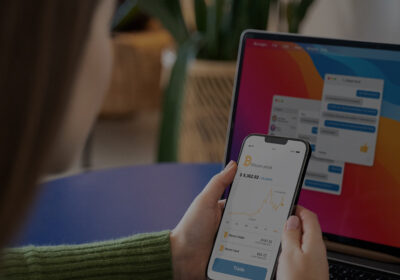Low-code/no-code (LCNC) platforms have gained significant momentum in the software development world, providing businesses with faster and more affordable ways to build custom applications. These platforms have become a game-changer, especially for companies without extensive programming expertise, making app development more accessible to a wider audience. As the LCNC market continues to grow, two platforms that stand out are Bubble and FlutterFlow. Both platforms offer unique strengths and cater to different use cases. Let’s dive into a comparison of these two and help you understand which platform may be best suited for your next app development project.
What is Bubble?
Bubble is a no-code web app builder designed to help users create fully functional applications without needing to write any code. Founded in 2012, Bubble has gained significant recognition for its flexibility and scalability. While it has a steep learning curve, Bubble offers a high degree of customization and is particularly suited for building web applications that require complex workflows and data management.
Key Features and Capabilities:
- Customization: Bubble provides an advanced visual editor, allowing users to create custom workflows and design apps tailored to specific needs.
- Scalability: It supports dynamic data storage and real-time updates, making it a good choice for scalable web applications.
- Collaboration: Bubble supports multi-user collaboration, allowing teams to work on the same app simultaneously.
- Hosting and Security: Bubble hosts apps on its own infrastructure, ensuring security and scaling as the app grows.
Pros of Bubble:
- Extensive customization options for experienced users.
- Active community support and free resources.
- Free trial to test the platform before committing.
Cons of Bubble:
- Steep learning curve, particularly for beginners.
- Proprietary platform with limited control over the underlying code.
- No option to export code, which can complicate migration.
Best for: Building AI-driven apps, marketplaces, and apps that require complex integrations and custom workflows.
What is FlutterFlow?
FlutterFlow, founded by former Google engineers in 2020, is a low-code platform built on top of Flutter, a popular framework for building natively compiled applications. FlutterFlow is designed for building mobile apps but can also handle web applications. Known for its speed and user-friendly interface, FlutterFlow allows users to create mobile apps much faster than traditional methods, with the ability to export clean code for further development.
Key Features and Capabilities:
- Native App Development: FlutterFlow excels in creating native mobile apps that can be deployed on both Android and iOS platforms.
- Customization: While it offers pre-built templates and drag-and-drop components, FlutterFlow also allows developers to add custom code for advanced functionalities.
- Integration: The platform supports various integrations with APIs, Firebase, and other backend services.
- Export Code: Users can export the generated Flutter code, providing more flexibility for future development.
Pros of FlutterFlow:
- Faster app development compared to traditional coding.
- Native mobile app support for both Android and iOS.
- Integration with popular services like Firebase and Stripe.
- Ability to export code for more advanced customizations.
Cons of FlutterFlow:
- Limited customization options compared to Bubble.
- More suitable for developers with some technical knowledge due to code export features.
- Limited community compared to more established platforms.
Best for: Mobile apps, MVPs, and projects that require high-performance native apps.
Comparing Bubble and FlutterFlow
While both Bubble and FlutterFlow are powerful tools, they cater to different development needs.
- Ease of Use: Bubble has a steeper learning curve due to its complexity and customization options, whereas FlutterFlow is more intuitive, particularly for mobile app development. However, advanced customization in FlutterFlow can still require some coding knowledge.
- Customization and Flexibility: Bubble offers more customization options, allowing users to create highly specific workflows and features. FlutterFlow, on the other hand, is better for users who prefer a more visual approach, although it offers some code export capabilities for developers looking for deeper customizations.
- Performance and Scalability: Both platforms support scalability, but Bubble is best for complex web apps that may need extensive back-end management. FlutterFlow, being optimized for mobile app development, is designed to scale effectively on mobile devices and can handle large amounts of data through its integration with Firebase.
- Integration and Code Export: Bubble offers numerous integrations and has a flexible architecture for complex needs. FlutterFlow provides easier integration with mobile services, such as Firebase and APIs, and allows for code export, making it suitable for developers looking to build mobile apps quickly while retaining future flexibility.
- Community Support: Bubble has a larger, more active community, offering extensive resources, tutorials, and plugins. FlutterFlow’s community is growing but still smaller, with some limitations in resources compared to Bubble.
Which Platform Should You Choose?
The choice between Bubble and FlutterFlow depends on your project’s specific needs.
- Choose Bubble if your focus is on building web apps that require complex functionality and integration, especially if you need deep customization or plan to build something more than a simple app.
- Choose FlutterFlow if you are focused on developing mobile apps quickly, especially if you need to create apps for both iOS and Android platforms with clean, native code.
Both platforms offer distinct advantages, and understanding your project’s long-term goals is key to making the right choice.
Conclusion
As the low-code/no-code development landscape continues to evolve, both Bubble and FlutterFlow are leading the charge in offering powerful, accessible platforms for app development. By considering factors such as ease of use, customization, scalability, and your project’s requirements, you can determine which platform best suits your needs.
At Verbat, we specialize in helping businesses adopt the right development solutions to optimize time and costs. If you’re looking to build a custom app but aren’t sure where to start, our team is here to guide you through the process and help you choose the best platform for your project.
Contact Verbat today to discuss your next app development project and how we can help you maximize your app’s potential with the right platform!





